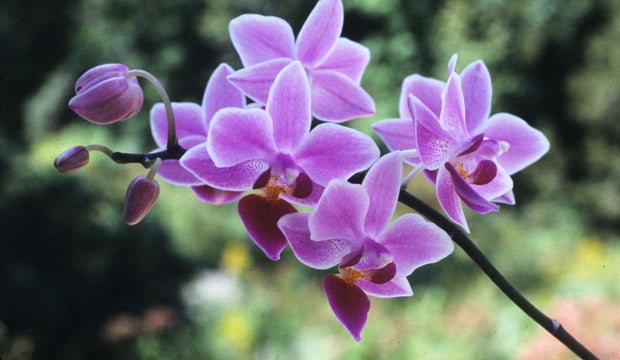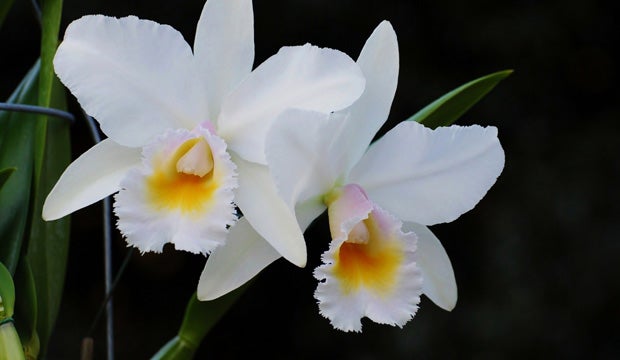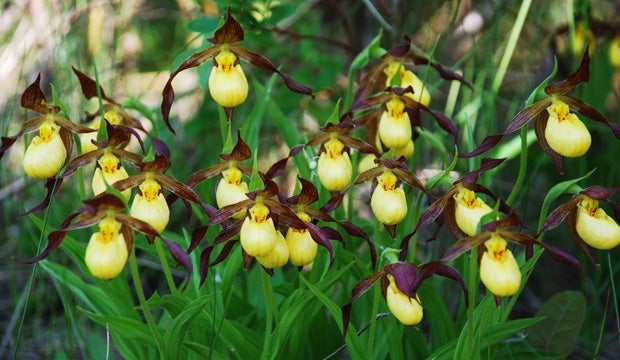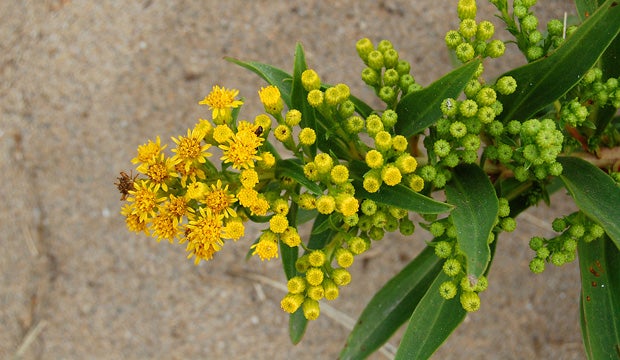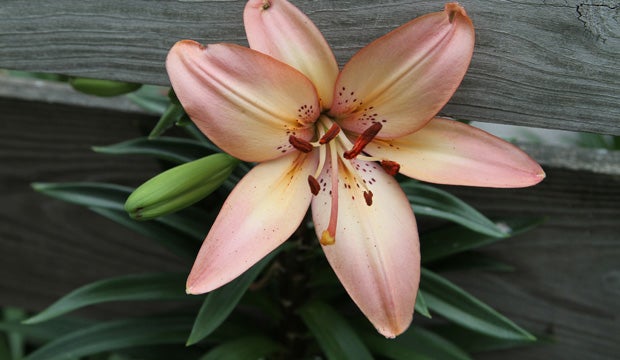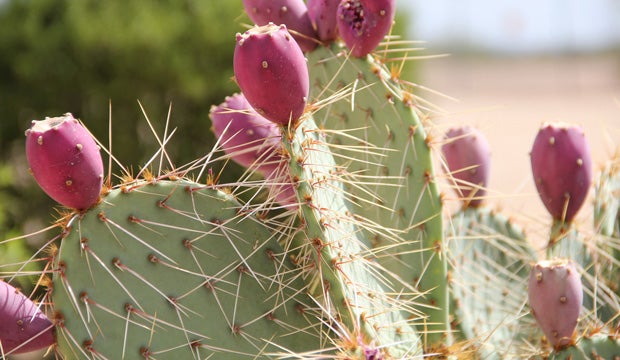Three top tomato growing tips!
ListenHighlights from show for April 6, 2013:
Bringing up bountifully blooming hydrangeas
Rob from Iowa had a question about how to best care for his hydrangeas to ensure they have beautiful blooms. After pruning the plant to 6-8 inches off the ground, the plant did not bloom at all. Mike’s advice for caring for hydrangeas was simple: Leave the plant alone. After a hydrangea expert came into the show years ago, Mike learned that the best way to care for the plant is to be patient.
“Let the plant grow in the spring…after all the flower heads are developed and opening, then you can go through the plant and take out any non flowering stems…you do that and you will never accidentally cut off a flower bud and it will always look like your hydrangea is the fullest and most floriferous in the neighborhood.”
Mike McGrath

Photo by Flickr user Chiot’s Run
Organic deer repellant
Rob also was desperate to find a way to keep the deer away and stop them from eating the hostas around his property. Since motion activated sprinklers are not a financially viable option for most, Mike suggested using a gracious amount of deer repellant with a heavy concentration of putrescent egg solids about every two weeks in order to keep the deer away, especially since hostas are one of their favorite foods. The creative gardeners can also create a “cage without a cage” around the plants using stakes in the ground with fish wire wrapped around at about six inch intervals to keep the plants from being eaten.
Best time to prune lavender
Lastly, Rob inquired about when the most beneficial time of the year would be to prune his lavender plants. Mike’s advice is very simple, “You should not trim anything back at the end of the year. All you’re doing is exposing it to greater winter injury… Don’t prune anything in the fall: Go on vacation, get out of town, get out of Dodge!”
Hardy gardenia flowers
Lorraine from Broomall, PA corrected Mike’s claim that all gardenias are difficult to grow. She explained that the hardy gardenia variety she ordered from a catalog and planted outside her home has been thriving for over four years with little to no maintenance. Mike conceded that his experiences were with a different variety of gardenia that had trouble when grown indoors:

Photo by Flickr user Megan Hansen
“My knowledge of gardenias is limited to them being the one of the absolute hardest to grow indoor houseplants. I think they get depressed and take their own plant lives … I knew that most people would take them outside in the summer, and that the plants seemed to respond really well to that. But when they were brought inside for the winter, because they weren’t hardy, they would get all sullen and moody and start watching late-night television.”
Mike McGrath
Special guest: Robert Sprague
Robert Sprague, co-chair of the International Orchid Show and Sale, joins Mike in the studio to talk about the show coming to Philadelphia on April 12-14, 2013 at the Academy of Natural Sciences of Drexel University in Philadelphia. The show, which has been displayed annually for the past 40 years, will feature 36 exhibits of orchids from both local societies and vendors from around the world. There will also be lectures and one photo exhibit of the over 50 species of orchids that grow in the wild in Pennsylvania and New Jersey.
“We wanted to take the show out of the suburbs and into the big city so that more people could have convenient access to enjoy these wonderful flowers,”
Robert Sprague
Oceanfront gardening
Eleanor from Tuckerton, NJ wanted to know how she may successfully transport her plants from her backyard in Philadelphia to her weekend house at the Jersey Shore. Unfortunately, very few plants are able to tolerate the switch in climates and environment. However, Mike suggests table-top gardening on a large picnic table as a way to deal with the salt and sand filled ground by the shore. By gathering rectangular shaped pots on a large picnic table, Eleanor will be able to maintain her gardening whether she is at the shore or back in Philadelphia. Mike also suggests that she visit her local county extension office to learn of what plants are best suited for the climate by the ocean.
Slideshow Below — Highly Salt Tolerant Perennials:
Replanting an Arborvitae
Abe from Egg Harbor Township, NJ has a twelve foot tall emerald green arborvitae which he would like to replant at another place in his yard due to the tree growing slanted and the ground being too soggy to support a stake to hold it up. However, he would like to plant it in the same place that he recently cut down a silver maple tree whose stump was not removed, but ground down to surface level by arborers. Mike was not happy to hear this.
“I’ve got a real beef with arborists who are doing this. It’s the worst of two worlds. I mean, if you leave a visible stump in the ground, at least people know the plug is in the bathtub. But you grind it down to ground level, and you have achieved nothing positive except that you’ve hidden the fact that what looks like soil to the naked eye, it might as well be a concrete slab.”
Mike McGrath
Because of this, Mike recommends that Abe round up a bunch of guys to pull the stump up from the ground and dig a wide, but shallow hole to plant the arborvitae in. If the stump is too difficult to remove because it has been ground down to surface level, the arborvitae will have to be transplanted elsewhere.
How to assess the health of a tree
Marty from Norman, Oklahoma had some concerns about a red maple growing straight up in his yard that was not branching out at all at the bottom. According to Mike, a tree that is seemingly too tall and too thin is evidence that the tree is struggling to get more light. Mike insists:
“The health of a tree is going to be gauged by how well it leafs out in the spring time.”
Mike McGrath
-
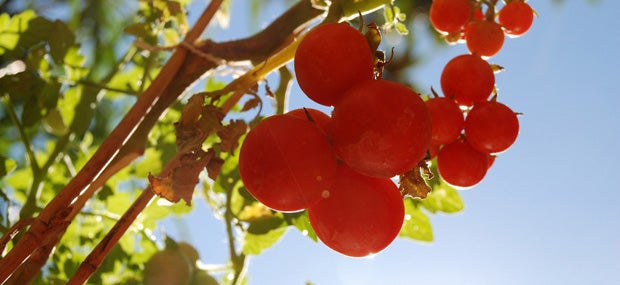
Photo by Flickr user matley0
Question of the Week: Three top tomato growing tips!
I started my own tomato plants this year; they’re indoors under lights, and so far so good. I used ‘Natural Beginnings Soilless Mix’ as the growing medium, and the package says to start feeding when the seedlings are four weeks old. I would like to use fish emulsion (because that’s what I have on hand). Can you tell me what strength to use?
Susan in Berwyn, PA
Mike McGrath’s answer:
I also use Natural Beginnings; it’s a very nice seed starting mix—a combination of two natural materials that provide the drainage young plants require: coir (a peat moss substitute made from coconut husks) and perlite (a volcanic glass), plus a touch of two natural fertilizers: worm castings and mealworm guano (or in other words, two different kinds of worm poop).
Those wonderful worm excrements give baby plants a nice gentle feeding—the same kind they’d receive in a natural setting where leaf litter encourages earthworms to live nearby and poop out plant food. And four weeks sounds just about right to start giving your plants a little more food—but I would never use something as odoriferous as fish emulsion indoors. (At least not again; I can still hear my wife yelling at me 25 years ago!) Always consider the smell factor with indoor plant food!
I’ve tried many different fertilizers on baby plants over the years and have settled on worm castings as the best. They’re easy to find at retail and mail order, have no odor and give the plants a gentle, natural feeding. I just top off the soil with about an inch of castings when I move my starts up into bigger pots (when they’re four to five weeks old).
Or you could water the plants with some worm poop tea. Fill an old sock with worm castings, hang it in a gallon of water for 24 hours and use the dark colored brew right away. (Then empty the sock contents into your compost pile or worm bin; or dump it out near garden plants outside; there’s still good stuff in there!)
And save the fish emulsion for outdoor use. (Although I greatly prefer fish and seaweed mixes to fish emulsion alone.)
I’ve been reading your book, “The You Bet Your Garden Guide to Growing Great Tomatoes”, and holy cow – the mistakes I’ve been making! One thing I’m going to improve upon for sure is adding calcium to prevent blossom end rot. But you recommend using eggshells for this and I’m not sure I can collect enough shells in time for planting. If I use an organic tomato food that specifies it contains added calcium, will it be as beneficial? Or is the power of eggshells hard to duplicate? Thanks!
Erika in Wellington, Colorado (about 75 miles north of Denver and 35 miles south of Cheyenne. Dry, extremely sunny, very windy and late to start–I would guess that my USDA gardening zone is barely a 5)
Mike McGrath’s answer:
I think he’s got a really big load of wood mulch to unload, Rob.
Well, first—thanks for buying my tomato book, Erica; that’s another 47 and a half cents in the retirement fund! Ka-ching! Now, the short answer is that natural fertilizers that specify they contain added calcium should be fine—preventing the heartbreak of blossom end rot, improving the flavor of your love apples and doing all the other good things that calcium does for tomatoes.
I started specifically recommending adding crushed eggshells to the hole at planting time simply because I found it was a great way to use my eggshells. We seem to eat just enough eggs over the course of a year to provide a dozen crushed shells for each of my tomato plants—and cucumbers since I learned that adequate soil calcium keeps them nice and crispy—and I have found eggshells to be stubbornly recalcitrant in compost piles.
My daughter recently started taking riding lessons, and I now find myself with access to horse manure. Is this a good thing to add to my veggie or flower gardens, and if so, how? Is there a way to liquefy it? Would a manure tea feeding help my peppers, tomatoes, cucumbers and summer squash? Thanks,
Gene in Ambler PA
Mike McGrath’s answer:
If I had a dollar for every time somebody has come up to me at a show and said “my grandparents only used horse manure and had the best tomatoes around”, I’d be a lot closer to that retirement fund. But I can’t recall anyone ever coming up to me and saying that they personally layered their garden in equine excrement and had a good experience.
First, horse manure must be thoroughly composted before use. Horses have very inefficient digestive systems that pass lots of seeds through without harm to the seeds; so anyone foolish enough to use fresh horse manure in their plots will spend the summer battling ferocious weeds. And the weeds will win. And fresh manure in any form—solid or liquid—is so ‘hot’ with Nitrogen it can injure (‘burn’) plants.
Now, the stable sweepings that horse owners have access to are a combination of the two things the horse decided to get rid of (solid and liquid) and the bedding used to keep the stalls clean and less slippery. And piling up this combination of Nitrogen rich waste and dry brown bedding for several months to a year (depending on factors like climate, air temperature, and the size of the pile) produces a material that, when finished, is dry, crumbly and virtually odorless. But it is not “compost”. It is composted manure and still overly rich in Nitrogen—the nutrient that grows big plants but that can inhibit fruiting and flowering.
That makes completely composted horse manure a perfect fertilizer for plants that like a lot of Nitrogen—like sweet corn and lawn grasses, but less than ideal for fruiting crops like tomatoes and peppers.
Find this Q&A helpful? Find more gardening solutions at Gardens Alive »
— This week’s post was written by Jolie Higazi, You Bet Your Garden Intern
WHYY is your source for fact-based, in-depth journalism and information. As a nonprofit organization, we rely on financial support from readers like you. Please give today.



